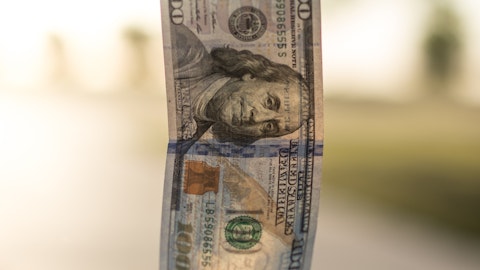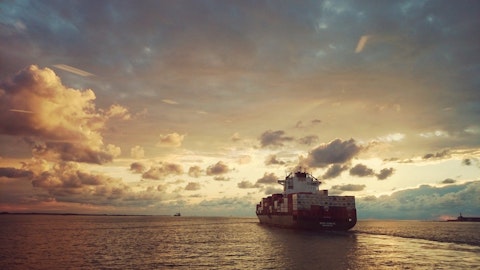Lois Zabrocky: No, absolutely, Omar. So thank you for giving me that opportunity. These three VLCCs that we’re going to take in the first half of the year, and then combine with those two Aframaxes brings onto our balance sheet $500 million worth of assets at today’s market level. So that represents a couple of years of depreciation, amortization, CapEx. So that’s a nice tenant of our growth. On the MRs, we’ve been pretty judicious. The reason that we are targeting the MRs for sales is truly just because those are the 2008 built vessels and we are earning a lot of money on them, and you make a lot of money when you sell them. So we’re just €“ we’re really being very prudent and just doing that very judiciously, not in a big movement.
So I guess that’s how I would respond to that. At present, every one of the ship sets on the water earning is, earning very impressively, but we’re still going to be disciplined with making sure we are keeping that fleet competitive for the future.
Omar Nokta: Yes, that makes sense, Lois. Thanks for that. And maybe one of the themes that we’ve noticed here over the past maybe year is, at least on the bigger ships that go into drydock looking to install scrubbers, not a substantial amount, but there are a few companies that are doing one or two here or there. How are you thinking about that? I know you €“ I think just looking at the grid in your appendix, you’ve got a few ships going into drydock. Any interest in just taking maybe a flyer on a handful of scrubbers when those go in?
Lois Zabrocky: Yes. So, of course, 10 VLCCs that are on the water have scrubbers. We have two of our Suezmaxes that have scrubbers. Well, one of those scrubbers we put on last year. And it is providing a good return. We don’t €“ we like to target the largest vessel that’s where you’re going to get your biggest alpha from. We don’t have any of the Suezmaxes going into dock this year, but we are constantly €“ that’s a argument that I have with Bill all the time we go back and forth on whether or not we would put in more at this juncture. But definitely the scrubber investment that we’ve done, we’re very happy with that.
Omar Nokta: Yes, definitely. All right, Lois, well, thanks. I’ll do one more if you don’t mind.
Lois Zabrocky: Not at all.
Omar Nokta: Just as you think about the VLCC new building. Yes. So those VLCCs that come on here in the next several months, obviously you bought those at the absolute right time, if we look back at the price level. And yet, even though they’re on time charter, they do have the profit share component, if I remember correctly. How should we €“ can’t remember exactly. How should we think about the profit share? Should we just simply assume is it 50% of the upside above, like prevailing market spot rate averages, or is there an LNG price component to that? Or how should we just model those profit shares?
Lois Zabrocky: I €“ basically, I don’t think we’ve ever gone out with what the actual base was, but you can assume that the base is €“ it has a three in front of it, but not a lot more. And then just run a calculation on the monthly TD3, which is east and 50% above that run on low sulfur bunkers will come to the owner and half will go to a shell.
Omar Nokta: Okay. And is there a cap?
Lois Zabrocky: No.
Omar Nokta: There is no cap. Sorry.
Lois Zabrocky: No.
Omar Nokta: Okay. Thank you. All right, well, I’ll turn it over.
Lois Zabrocky: Thank you.



